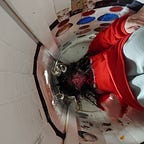Mars: A Not So Distant Planet
Have you ever wondered what you would do on Mars? Well for a lot of people that answer is yes. Mars is looking pretty good for us so far, but we’re still not fully there yet. Although we have managed to send people to the moon and robots to investigate Mars, we still need a little more preparation and planning to get people on the red planet. We are using the Curiosity rover to help us get a better understanding on what the temperature and terrain is like there. There so many things to know and soon one day well be able to experience it.
All in order
Mars is the fourth planet from the sun, behind Earth and in front of Jupiter. It’s also the second smallest planet in the solar system. This planet is a Terrestrial type due to its rocky surface and terrain. We know of two moons near Mars. They are called “Phobos”, and “Deimos”. Phobos is a little bit bigger than Deimos, but they are two of the smallest moons in the solar system. Mars was formed 3.5 billion years ago and is 4,212 miles in diameter. Mars is 132.27 million miles away from the sun and is 39.564 million miles from our home planet. This distance seems great, but we have managed to get four rovers on to this unexplored mystery.
Rovers
Rovers help us learn more about Mars and make us a step closer to it. One example of a rover that successfully made it to the surface of the red planet is Curiosity. Curiosity was put there to see if Mars had the right conditions for microbial life(basically solving the question would it be safe for humans to live on Mars). Other examples of these robots that are taking steps for humanity is the Spirit and Opportunity rovers. They were sent to mars to try and uncover the history of water on the desolate planet. Next Sojourner was sent to Mars to demonstrate a path finding software that makes it possible to transport science equipment. Finally Perseverance was commissioned to pick up samples from the rocky surface. All of these rovers are exploring the planet to get a better understanding of its history, so what really happened back before we set out to search mars.
The Past
Let’s talk about the past. Today, Mars is really cold and can drop temperatures up to -225 °F, but 3.5 billion years ago it was warm and geologically active. It wasn’t always that cold, in fact Mars used to have rivers. Thousands of years ago, Mars had lake beds and reviver vales that would snake around it. We can still see evidence of these geological dispersions today, but all the water is frozen in polar ice caps. Due to this evidence, there might have been microscopic life in the past. We know that every living thing is 70% water, so if there was water on Mars there might have been living things inhabiting it. There were active volcanoes on Mars 3 billion years ago. An example of these volcanes is “Olympus Mons”(the largest volcano in the solar system at three times of the Hight of MT. Everest which is 16 miles or (25 km)) and “Pavonis Mons”(a large shield volcano located in the Tharsis reign of Mars). To sum this up, Mars had water and was warm but because of the thin atmosphere it got colder and the water froze into ice caps.
The Future
So we know what happened in the past, but what about the future? We don’t know what really will happen in the future, maybe we will live in mars maybe, or maybe we’ll find other life on mars. We really don’t know what's going to happen, but there has been some predictions. For example, Nasa predicted that, "People will live on mars within twenty five years." Another prediction is that Space-x will find a way to send people to Mars by using an “Interplanetary transport system”. In general we do not know what is going to happen in the future, but we can only guess. What do you think?
End of take off
Swoshhhhhhh! Goes the ship as it lands. Let’s recap. First, Mars is the fourth planet in our solar system, has two moons, and we have hope to live there. Next, we have sent rovers to Mars to explore, investigate, and answer some questions about the mysterious planet. Then, in the past, Mars was warm, had water and volcanoes, and now, sense there is a thin atmosphere, is cold with water that has turned into ice caps. Finally, we make predictions on what will happen in the future, weather it be humans landing on the dusty surface, or having an interplanetary transportation system that is connected to Mars. Although we have not been able to step foot on the red planet yet, through hope and hard work, I wish to see you all there.
Thank you for reading this article, I hoped you enjoyed it and learn something new.
Article by: Autumn Leafs
Edited by: Khione Winters
khionewinters.writer@gmail.com
I would like to give credit to:
https://solarsystem.nasa.gov/planets/mars/overview/#ten_things_to_know_about_mars
